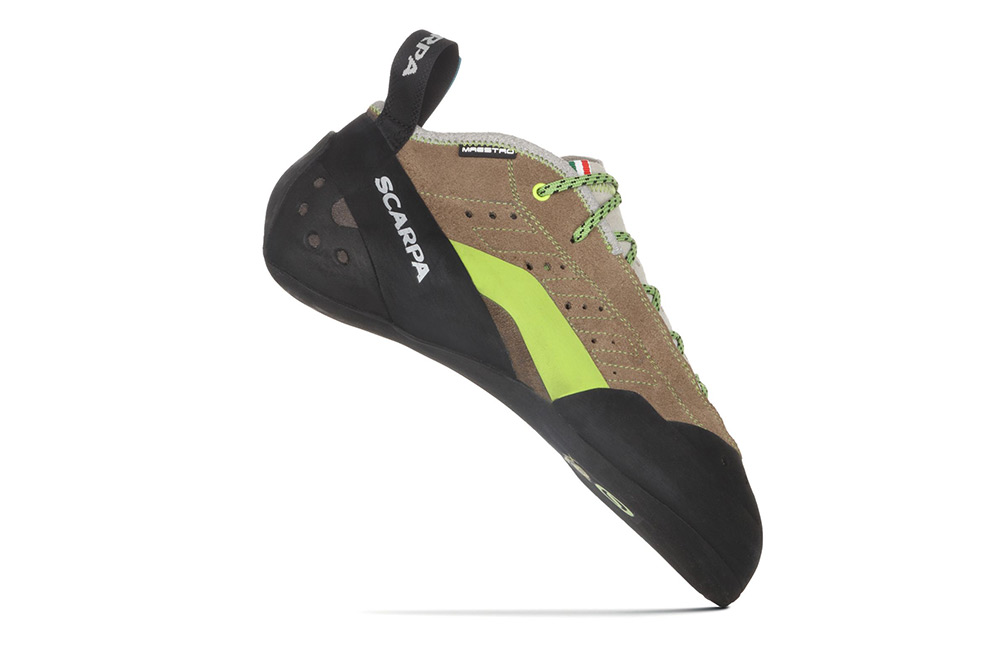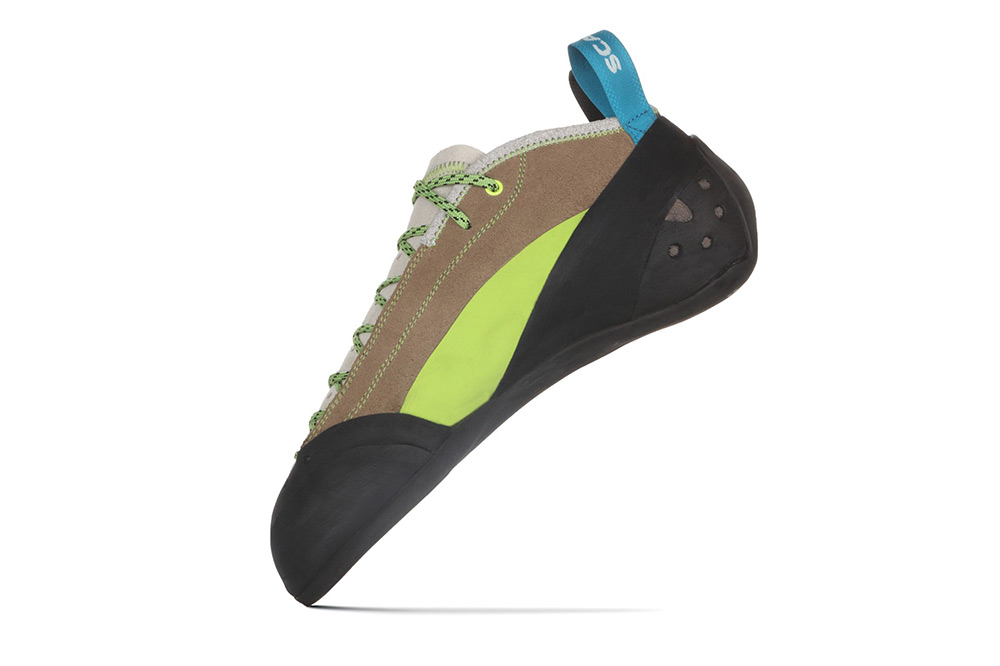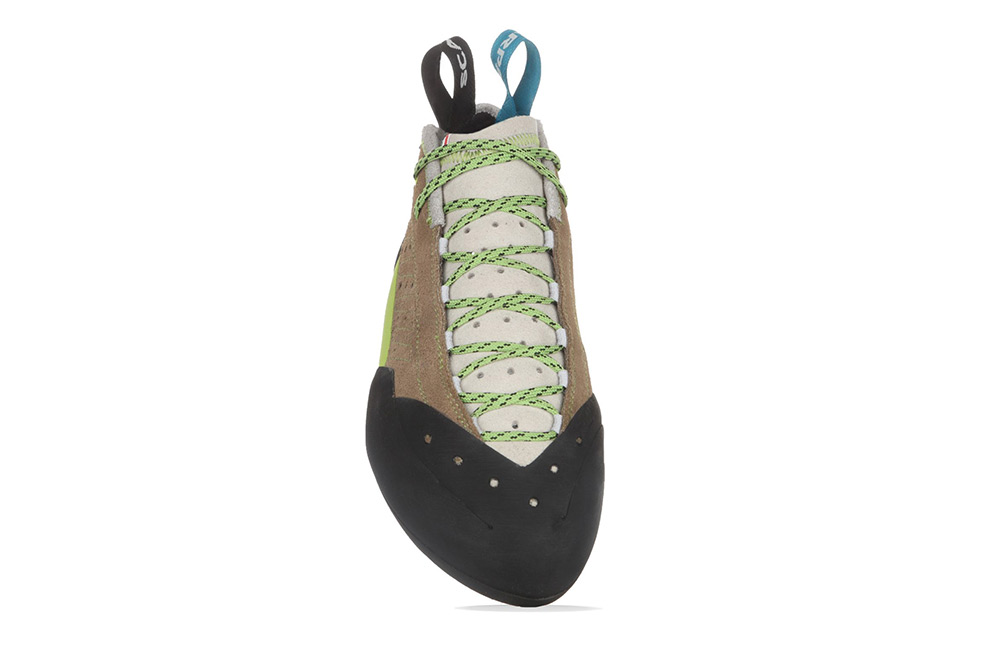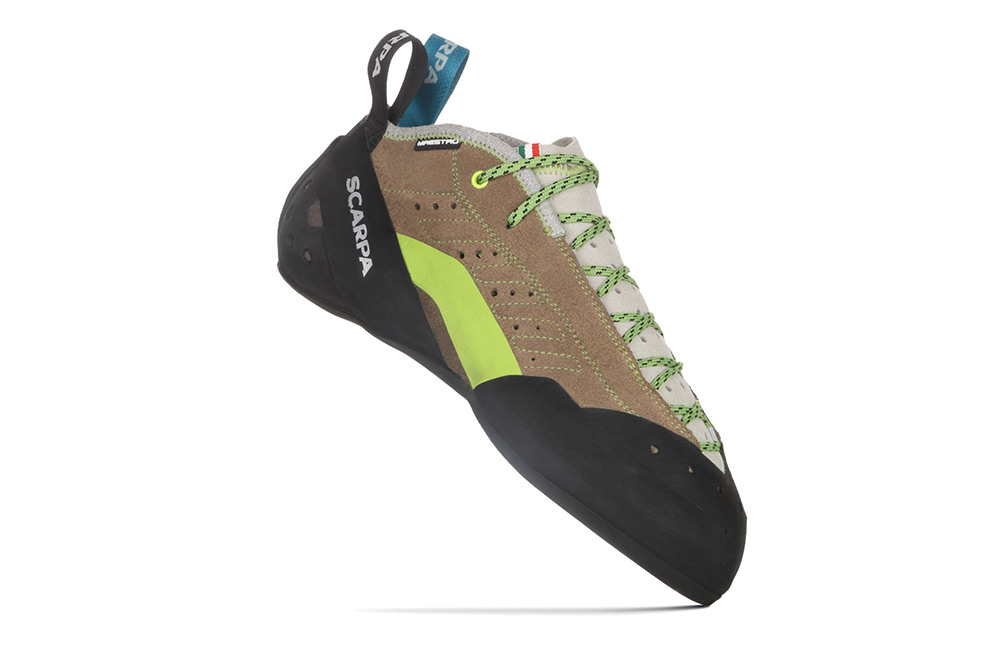Scarpa Maestro Mid Eco – A High-Performance Multi-Pitch Trad Shoe
With the seemingly endless stream of images of buff tattooed guys (with perfectly coiffed beards) and similarly buff inked gals (sans beards) crushing steep boulder problems and sport routes, one could be excused for thinking that climbing only takes place on overhanging terrain. I get it. For most of us, these pics are more dramatic and aspirational than those showing the more vertical (and typical) terrain we tend to climb. Unfortunately, this obsession with the steep has driven climbing shoe manufacturers to focus on flashy high-end sport climbing shoes while forgetting that many of us still enjoy climbing long (and less steep) multi-pitch climbs. And when companies do offer something for the trad or multi-pitch climber, the shoes tend to be relatively simple flat-lasted models that are barely a step up from entry-level climbing shoes. With so many underwhelming options for the long-route climber, it’s refreshing to see Scarpa wading into this under-served market with the introduction of the new Maestro Mid Eco.

Scarpa Maestro Mid Eco
Upon opening the box, the first thing you notice is the unmistakeable smell of leather. Yep, seems that Maestro Mids are made of good old cowhide. Now before the vegans get their hemp shorts in a knot, let’s all step back, take a deep breath and consider a few things. The leather Scarpa is using in these shoes is Eco leather, which has been tanned and dyed without the harsh and toxic chemicals (can you say chromium?) used in conventionally processed leather. Leather also delivers a combination of durability, breathability and foot-conforming fit that synthetic uppers often struggle to achieve. And while these qualities are important in any climbing shoe, they are even more critical for footwear that will be worn for hours and be subjected to the upper-shredding abrasion encountered on multi-pitch crack climbs. These reasons for using leather may not sway most vegans, but the majority of climbers will appreciate Scarpa’s material choice and their commitment to minimizing environmental impact.

Scarpa Maestro Mid Eco
Ok, now that we have that out of the way, let's look at how the Maestro Mids fit. Knowing that these shoes will be used on longer trad climbs, Scarpa has speced a relatively flat and mildly asymmetric last with a very slightly downturned toe. This combination ensures the shoe is comfortable on multi-pitch routes while still delivering the precision necessary on more technical face climbs. The addition of Scarpa’s IPC-Tension active rand system and a 1.4 mm midsole provide all-day support (essential for edging) without compromising the sensitivity and flex needed when smearing. Scarpa has added a plushly padded tongue that delivers excellent protection when jamming wider cracks. Speaking of protection, Scarpa has also taken the time to position the lace eyelets (they’re really lace tunnels) so that they’re shielded from abrasion when jamming. The toe profile is low enough for thinner cracks, but these would not be my first choice for super-thin crack testpieces where slipper-like footwear tends to excel. At the back, the Maestro Mids sport a comfortable mid-volume heel cup that fit my foot perfectly. Finally, 4 mm of Vibram XS Edge rubber covers the bottom of the shoes. XS Edge is Vibram’s firmest rubber and is optimized for edging and long multi-pitch climbs. It’s not surprising that Scarpa has chosen it for the Maestro Mids.

Scarpa Maestro Mid Eco
So we now know a little bit about the construction of the Maestro Mids. The next step is to look at how they perform. Scarpa has created the Maestro Mid to excel on long multi-pitch climbs where you’ll encounter extended edging and crack climbing. In use, I found the shoes delivered in spades. When edging the Maestro Mids were supremely precise and comfortable – important qualities for multi-pitch climbing. But unlike other edging-oriented shoes, the Maestro Mids also provided the feedback and sensitivity necessary for tenuous smearing. This last point is particularly impressive considering the 4 mm thick sole and speaks to the balanced construction of the shoes. Crack climbing was just as impressive and the shoes really shined on wider cracks (hand and fist) while still providing solid performance as the cracks got thinner.
At this point I need to talk about the overall forefoot and heel comfort of these shoes. Scarpa needs to be praised for using unlined leather in the uppers. With use, the uppers stretch and conform to the shape of your foot creating a custom-like fit. The rear half of the shoes are lined with a soft synthetic fabric and have a bit of foam padding near the collar resulting in comfort and much-appreciated ankle protection on wider cracks.
At this point I need to talk about the overall forefoot and heel comfort of these shoes. Scarpa needs to be praised for using unlined leather in the uppers. With use, the uppers stretch and conform to the shape of your foot creating a custom-like fit. The rear half of the shoes are lined with a soft synthetic fabric and have a bit of foam padding near the collar resulting in comfort and much-appreciated ankle protection on wider cracks.

Scarpa Maestro Mid Eco
One possible concern I noticed was that the outside collar on the right shoe was initially rubbing my ankle. This did not turn out to be an issue, but climbers should pay attention as these mid-cut shoes obviously fit differently than low-cut shoes and slippers.
Other than this minor fit quibble, I found the Scarpa Maestro Mids to be an exceptional shoe for multi-pitch trad climbs. They are impeccably constructed, comfortable and can climb at a surprisingly high standard (as long as you stay off the steeps). Anyone looking for high-performance multi-pitch footwear will not be disappointed with these shoes.
You can find out more about the new Scarpa Maestro Mid Eco and other fine Scarpa shoes at https://www.scarpa.com/
Other than this minor fit quibble, I found the Scarpa Maestro Mids to be an exceptional shoe for multi-pitch trad climbs. They are impeccably constructed, comfortable and can climb at a surprisingly high standard (as long as you stay off the steeps). Anyone looking for high-performance multi-pitch footwear will not be disappointed with these shoes.
You can find out more about the new Scarpa Maestro Mid Eco and other fine Scarpa shoes at https://www.scarpa.com/


